When spring arrives, growing your own wildflower or lupine seeds may be on the docket for your garden. Popular in landscaping and ornamental areas of a variety of outdoor settings, lupine flowers are beautiful and easy to care for. But do you know all of the steps needed to grow these stunning flowers from seed, and how can you best harvest lupine seeds to use in next year’s garden?
Planting lupine seeds is easy and rewarding, as you only need to soak the seeds before planting. You can start seedlings indoors and plant outside after one month, or directly sow these beauties into your garden after spring’s first frost or in fall for best results. It’s easier than you think to grow lupine, especially after reading our step-by-step guide. Let’s get started!
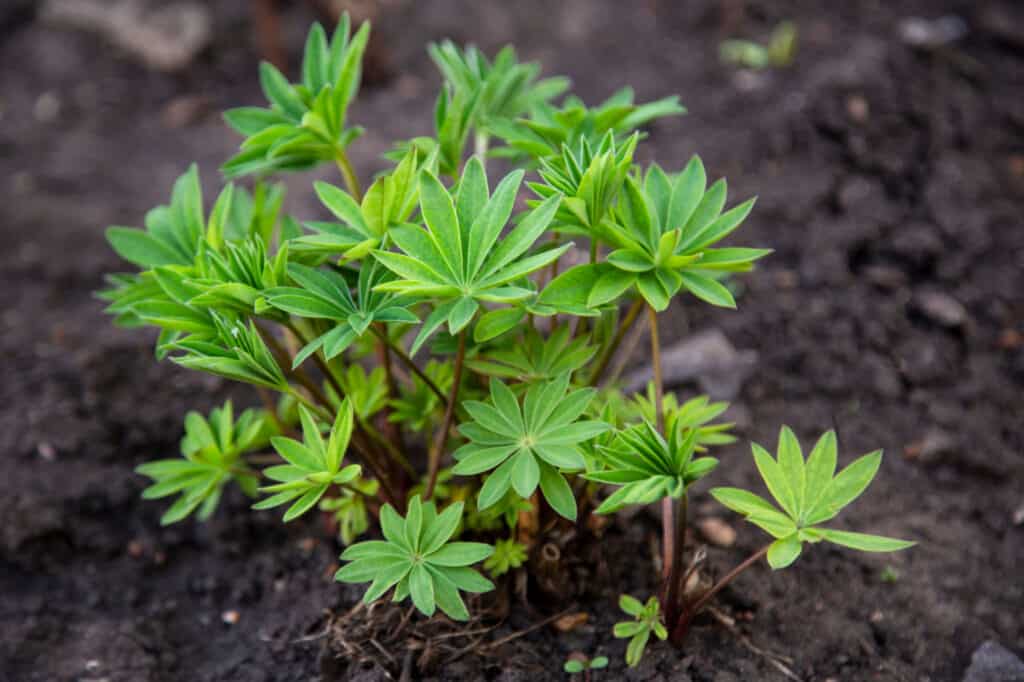
Planting lupine seeds is easy and rewarding, as you only need to soak the seeds before planting.
©Margaritka Khvan/Shutterstock.com
| Lupine Seeds | How to Grow |
|---|---|
| Hardiness Zones | 3 through 10 depending on variety |
| Popular Lupine Varieties | 200+ amongst wild and cultivated varieties |
| Harvesting Lupine Seeds | Easy-to-see seed pods means harvesting is simple for next year’s garden; plants also self-propagate if the seed pods are undisturbed |
| Time of Year to Plant Seeds | Early spring or fall; can plant seedlings or starts a bit later |
| Things to Note | Some lupine species can be poisonous to livestock and cattle, so plant with care! |
Lupine Seeds: An Overview and How They Help Your Garden
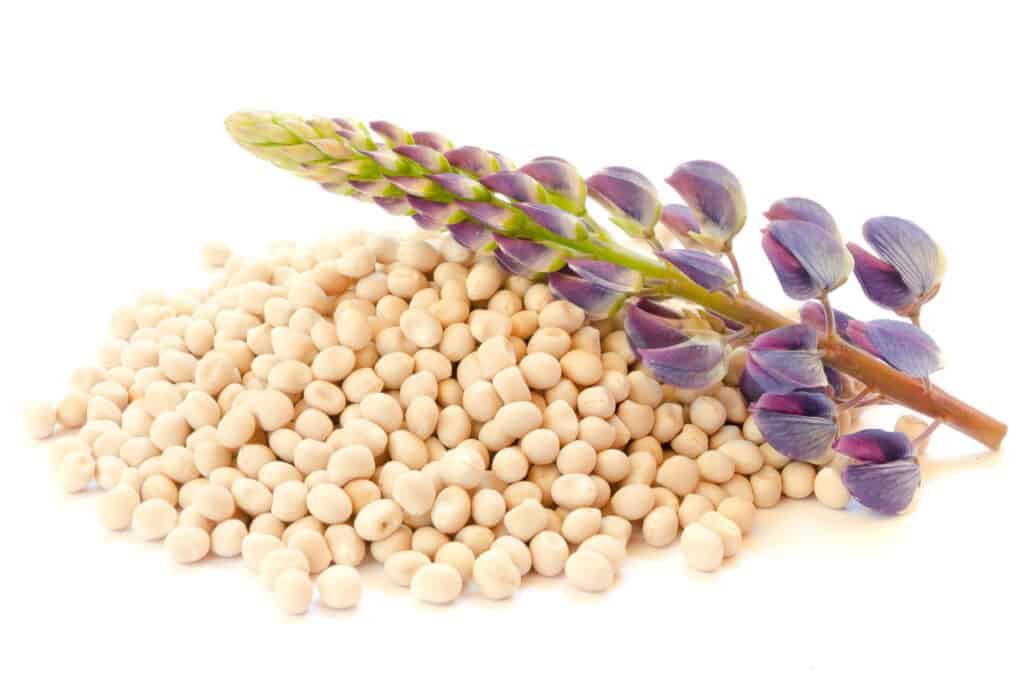
Lupine is easily grown from seed, as they produce large seed pods.
©Andrei Dubadzel/Shutterstock.com
There are a number of reasons to grow lupine in your own garden. Not only do these attractive wildflowers bring many different types of pollinators to your backyard, but they also readily reseed themselves as perennial blooms. However, you can always grow your lupine flowers as annuals if you don’t trust how easily these flowers spread!
Another popular reason to plant lupine has to do with their nitrogen-fixing properties. These flowers not only look great in a garden, but they also help maintain and expand the available nitrogen in your soil. However, keep in mind that some lupine species are poisonous to livestock. If you have any cattle or other hoofed animals on your property, make sure you plant with care!
Popular Lupine Varieties
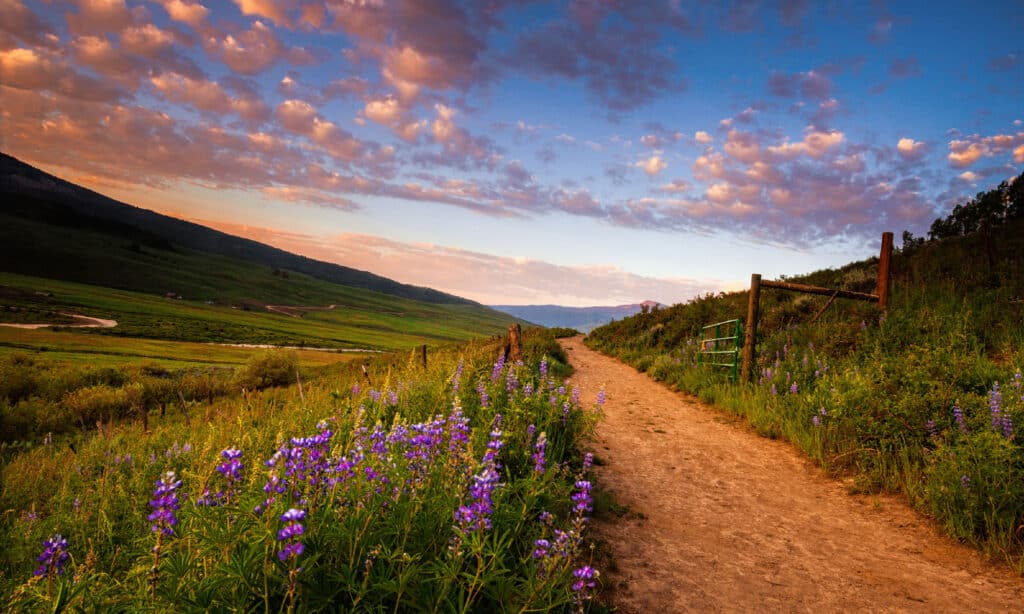
You can always grow your lupine flowers as annuals if you don’t trust how easily these flowers spread!
©iStock.com/AndrewSoundarajan
Wondering which lupine varieties are popular and grow well in your region? Here are some of the most popular lupines for you to consider planting in your own backyard!
- Russell Hybrids. Beautiful colors and the most popular in gardens; hardy in zones 3-8
- Arroyo. Hardy and popular along the West Coast, producing indigo blooms; hardy in zones 1-10
- Texas Bluebonnet. Infamous for filling Texas fields with blue; hardy in zones 3-8
- Yellow Lupine. Buttercream colored and a very hardy annual in zones 1-10
- Wild Lupine. The most common wildflower lupine variety; hardy in zones 3-8
Germinating and Growing Lupine Seeds
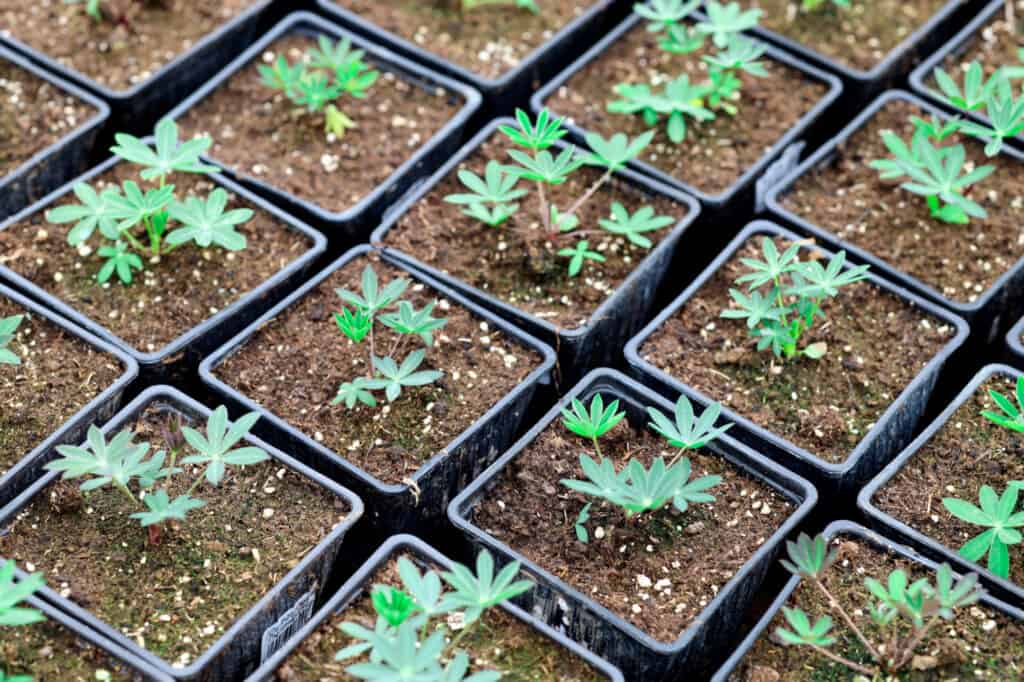
Lupine seeds can be directly sown or grown as starts.
©VeIrina/Shutterstock.com
You may think that a beautiful flower like lupine is difficult to grow and care for, but that’s definitely not the case. Not only does lupine self-seed as a perennial plant in some regions, but it also has easily harvestable seed pods that gives you more freedom in terms of planting and growing opportunities. Here’s our step-by-step guide for growing and germinating your own lupine seeds!
How to Grow Lupine Seeds
- Soak your seeds. Before planting any variety of lupine, the seeds need a good soak for at least 12 hours. Most lupines have a fairly tough outer coating that water will help dissolve, but you can also speed up this process using sandpaper.
- Directly sow your seeds in early spring. If the time of year is right, your soaked seeds can be directly sown in your garden as soon as your last winter frost has passed. Space your seeds a foot apart, or be prepared to thin your plants later. Less than a half inch in depth is ideal.
- Grow your seeds indoors for later transplant. If you want lupines in late summer or fall, you can always grow your seedlings indoors until they are established. Plant your seeds in individual containers and allow them up to 6 weeks of indoor growing time. Once large enough, transplant your lupines to their final location.
- Water regularly, and avoid compost. You can feed your lupines a plant food high in phosphorus if you want more flowers, but most lupine varieties don’t need much love. Once planted, these flowers stretch tall and look gorgeous all summer long!
Harvesting Lupine Seeds
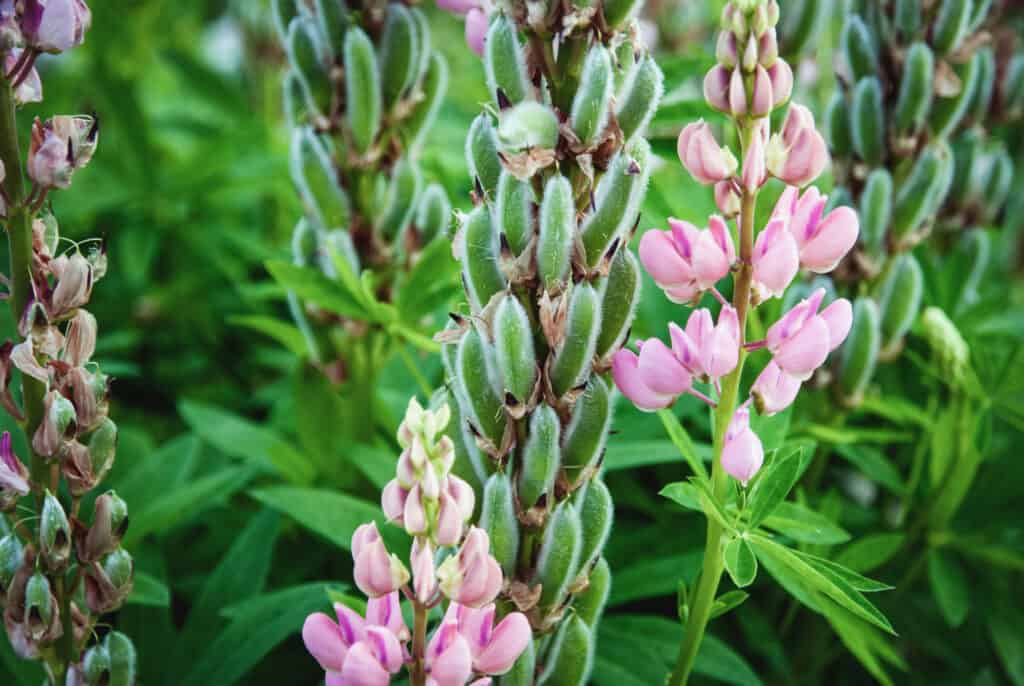
Before planting any variety of lupine, the seeds need a good soak for at least 12 hours.
©Nadya So/Shutterstock.com
At the end of summer, lupine flowers naturally become seeds. These seedpods look like peas (which makes sense, given that lupine is a member of the pea family!), and you can easily harvest them from your lupine flowers when the time is right.
Make sure your seed pods are no longer green, as lupine seeds are best harvested when the plant is yellowing. Gently pluck them from your plants and bring the pods indoors. Give them plenty of space to dry out and leave them undisturbed. You know when your lupine seeds are ready when the pod rattles when shook!
You can always leave your lupines alone, seedpods and all, as most of these flowers are perennials capable of returning, year after year. However, lupines tend to shoot their seeds farther afield than many homeowners prefer, so keep this in mind when deciding whether or not to collect your lupine seeds! Store your seeds in a chilly location for the winter, as lupines need some cold stratification to produce.
Can You Eat Lupine Seeds?
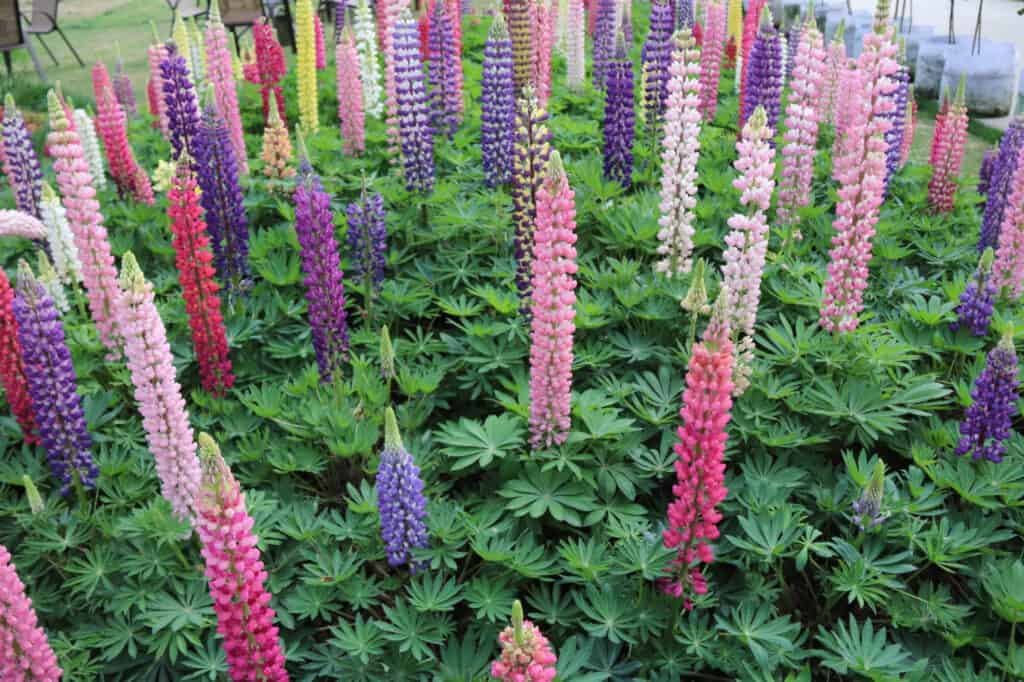
Make sure your seed pods are no longer green, as lupine seeds are best harvested when the plant is yellowing.
©Amel PhotographyDz/Shutterstock.com
Lupine seeds are, shockingly, edible. Members of the legume family, you can harvest a variety of different lupine seeds for edible consumption. While the flowers and leaves are not edible, lupine or lupin beans are popular in a variety of cuisines around the world, including the Mediterranean and Europe. You can pickle your own or roast them for a delicious snack, similar to chickpeas!
Up Next
The photo featured at the top of this post is © Amel PhotographyDz/Shutterstock.com
Sources
- Coated lupin bean snacks, Available here: https://onlinelibrary.wiley.com/doi/abs/10.1111/j.1745-4557.2007.00120.x
- Alder and lupine enhance nitrogen cycling in a degraded forest soil in Northern Sweden, Available here: https://link.springer.com/chapter/10.1007/978-94-017-1601-7_6
- Effects of scarification and cold stratification on seed germination of Lupinus sulphureus ssp. kincaidii, Available here: https://www.researchgate.net/profile/Thomas-Kaye-3/publication/260942702_Effects_of_scarification_and_cold_stratification_on_germination_of_Lupinus_sulphureus_ssp_kincaidii/links/0f317532b776dbdaf6000000/Effects-of-scarification-and-cold-stratification-on-germination-of-Lupinus-sulphureus-ssp-kincaidii.pdf
Thank you for reading! Have some feedback for us? Contact the AZ Animals editorial team.






